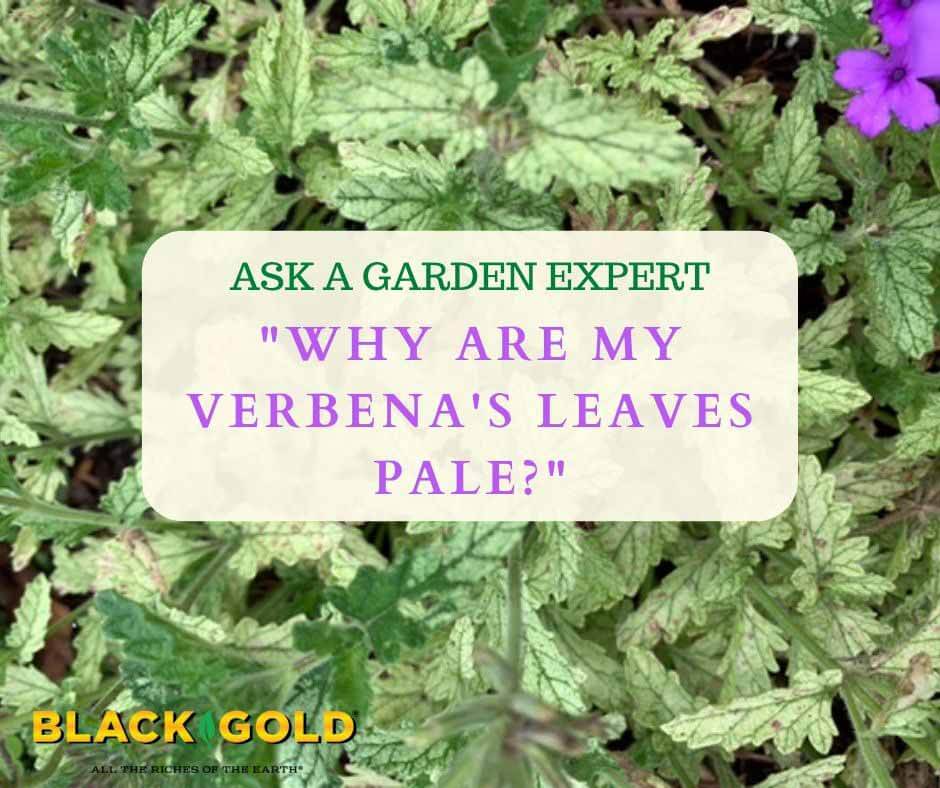
“Most of the leaves on my verbena have become very pale. Not yellow, just faded looking. The plant is still blooming, but the foliage doesn’t look healthy. Any thoughts on what’s going on?” Carlene of Conroe, Texas
Answer: Pale leaves are often a sign of stress, whether it be stress caused by excess heat, excess water, too little water, poor soil, a nutrient imbalance, or some other malady. Yours appear to be chloritic, but the discoloration is white and almost speckly, which is most likely spider mite damage. There also appears to be additional spotting. It is very challenging to provide a definitive diagnosis from a photo, so let me start with what Verbenas need for good growth and follow up with some additional suggestions for the possibility of mites.
Tips for Growing Verbena Successfully
Verbenas grow best in full to partial sun, and even though they are tolerant of hot weather, they should be provided partial sun during the hottest time of the day down in Texas. Plant them in average to fertile soil with excellent drainage. Once they are established, they will tolerate drought, but regular water makes plants happier. If they are in containers, water them daily and make sure the pots drain freely from the bottom. Fertilizer is recommended to keep them blooming all summer long. I recommend feeding them with Proven Winners Premium Continuous Release Plant Food because it is formulated for flowers, and you won’t need to feed weekly. If they become a little overgrown, consider cutting the old stems back to encourage new branches and flowers.
Identifying and Managing Spider Mites
These are tiny plant pests, and once you notice their damage, they are numerous and have already become a large problem. You will notice the damage when the tops of leaves look like they have little white spots across them. These are dead leaf cells that the mites have sucked dry. You might also see little webs on the leaves and tender stems of infected plants.
To see if you have mites, take a clean piece of white paper, hold it beneath the leaves, then tap the leaves onto the paper. If you have mites, lots of tiny specs will fall, and eventually, they will start crawling around. These are spider mites!
To manage them, remove the worst of the damaged leaves if you can. Then spray, wash, and wipe the remaining stems and leaves thoroughly. For potted plants, remove the top inch of potting soil and replace it with fresh. (We recommend using Black Gold All Purpose Potting Mix.) It also helps to wipe the container down, in case any mites have strayed. Finally, spray the plants with insecticidal soap or Neem oil (especially underneath the leaves). Continue to do the tap test and wipe and spray leaves as needed. In time you will overcome your spider mite problem.
I hope that these tips help!
Jessie Keith
Black Gold Horticulturist

